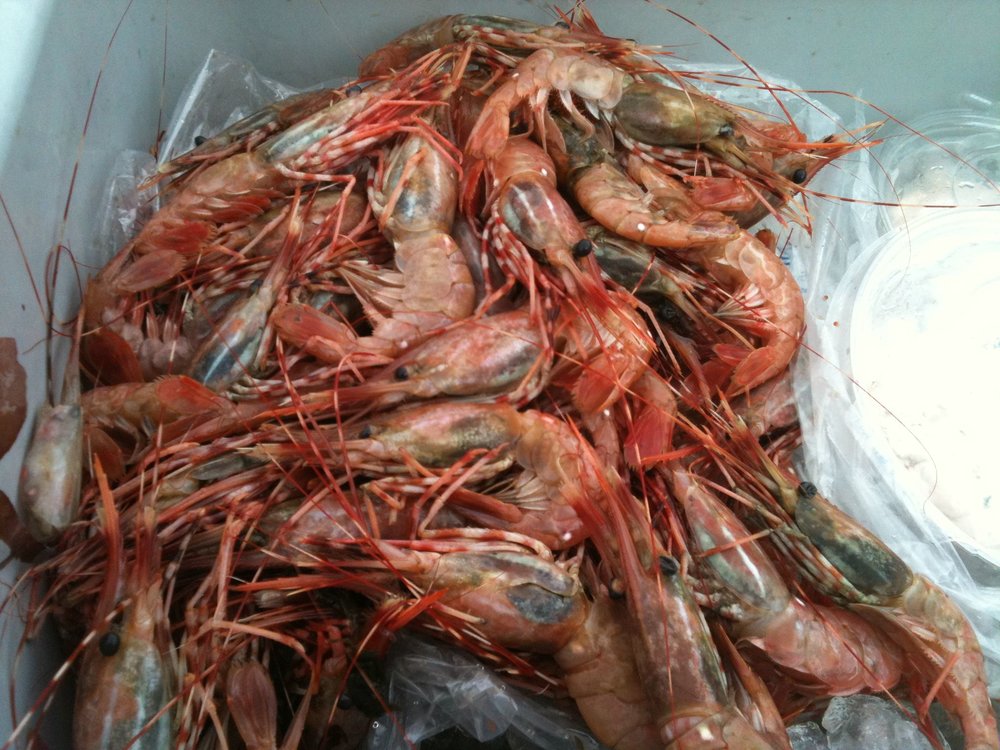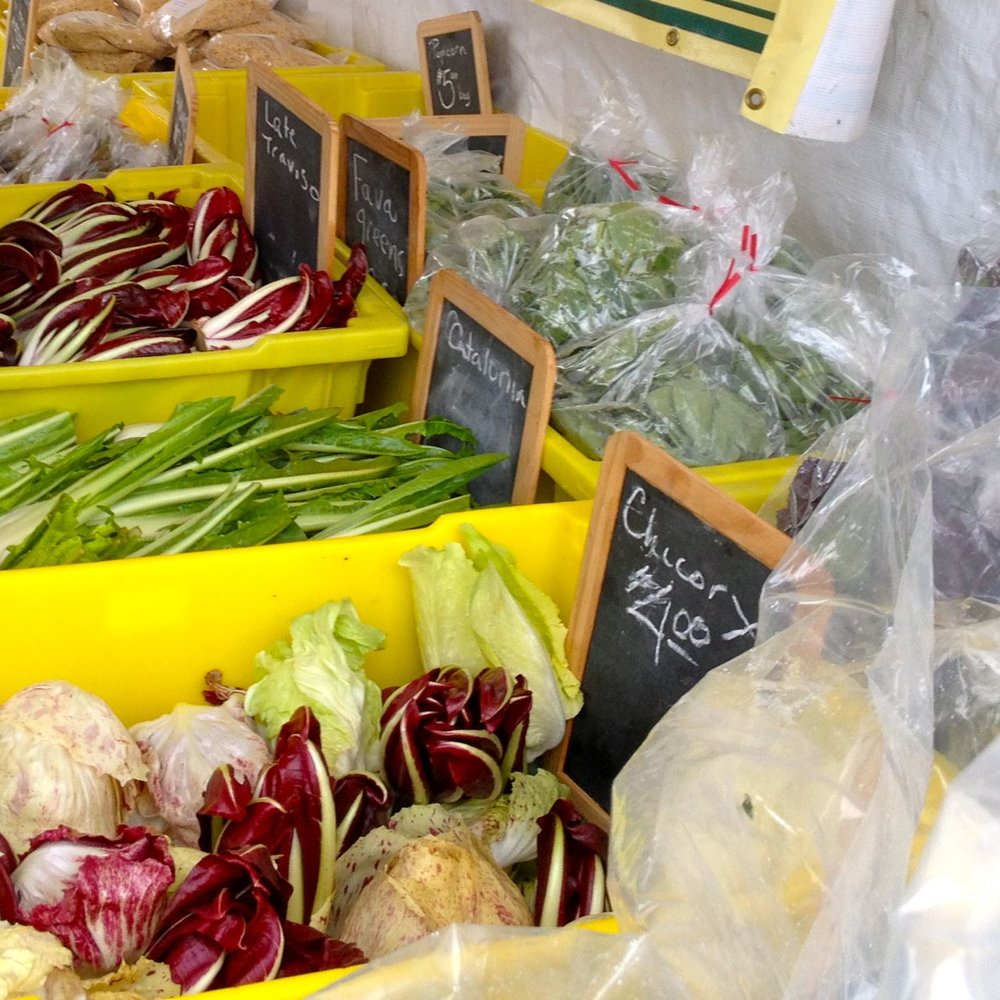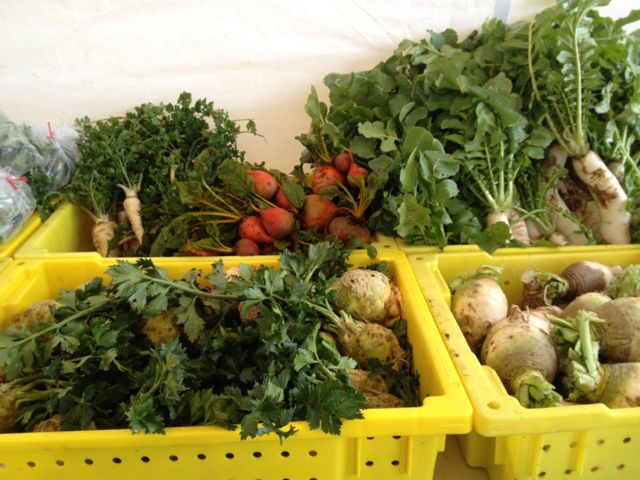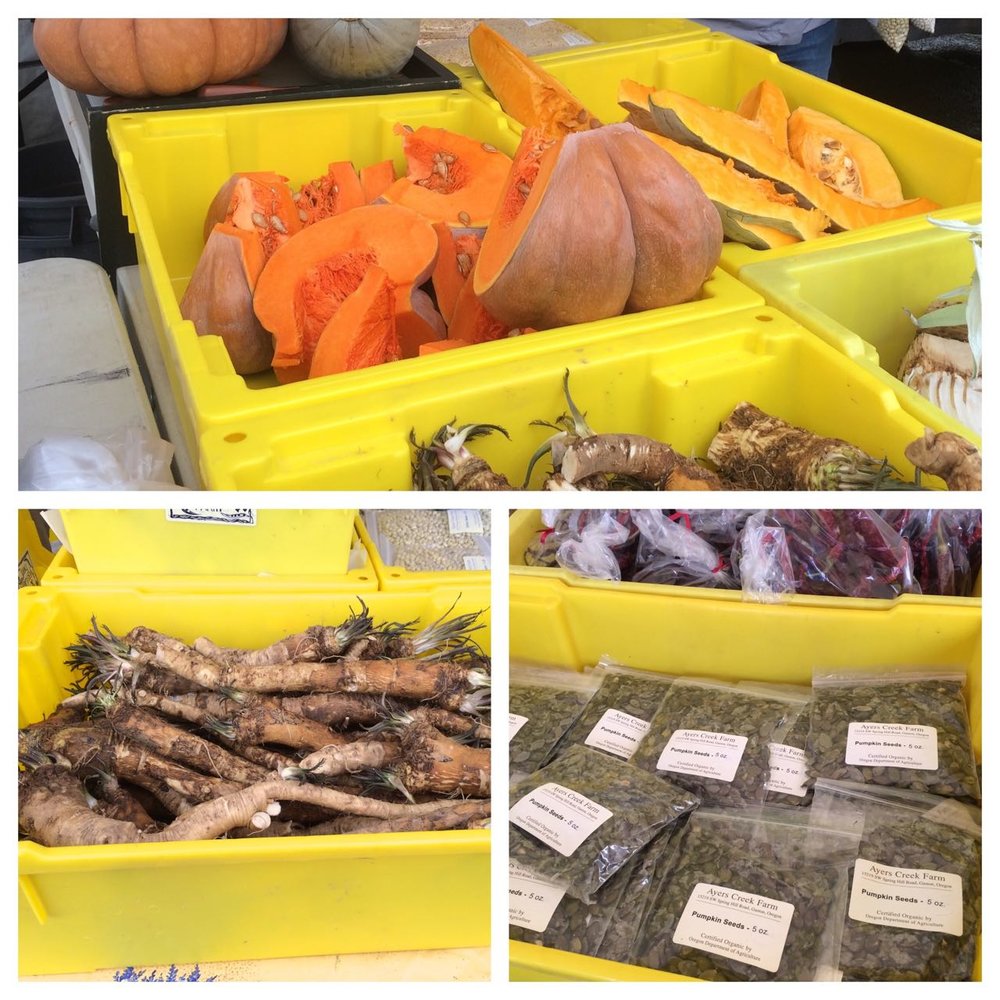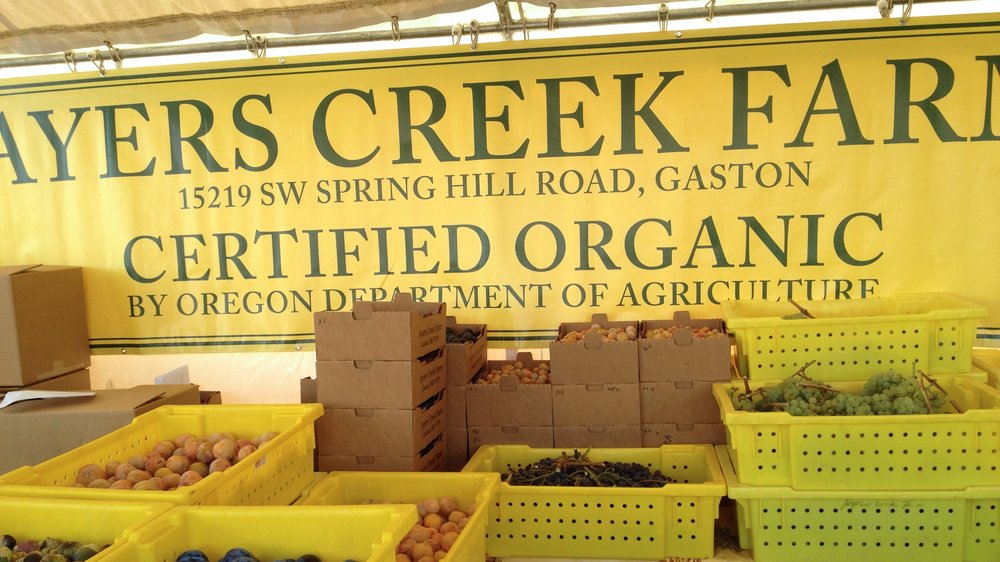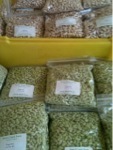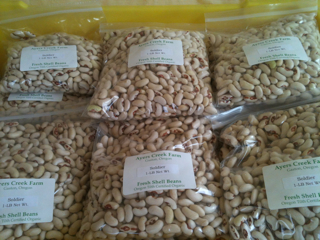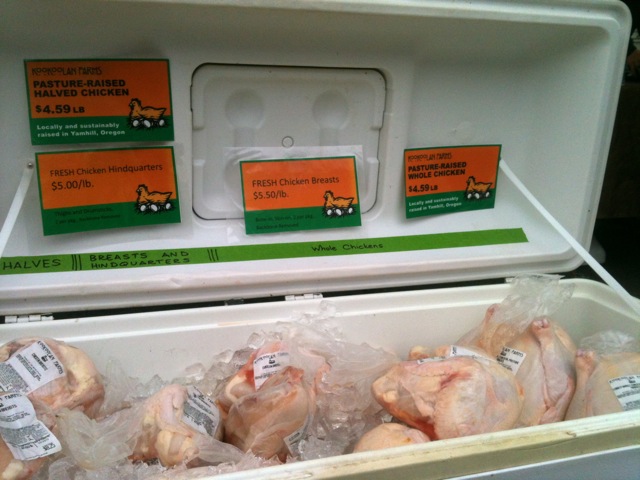Ayers Creek Farm Newsletter July 21 2013
Guest User
We will rise as the July's waxing gibbous moon sets over the Coast Range. With luck we will arrive at the parking lot at Wilson High School with a bit Ayers Creek to sell. The market bell rings at 10:00 AM.
This is our dreaded berry hole, when the early fruit have gone and the Chesters are offering only a few tantalizing specks of ripening. We will have some red currants and gooseberries. We are beginning to catch up after that wet spell in early June. The fenugreek went to flower in the high heat, but a new planting went in last Saturday and is sprouting nicely. Next week, we plant our chicories so we are thinking of winter as much as summer these days. Here is what we will have tomorrow:
Grains & Pulses: Frikeh, cornmeal, popcorn, black turtle and Dutch bullet beans.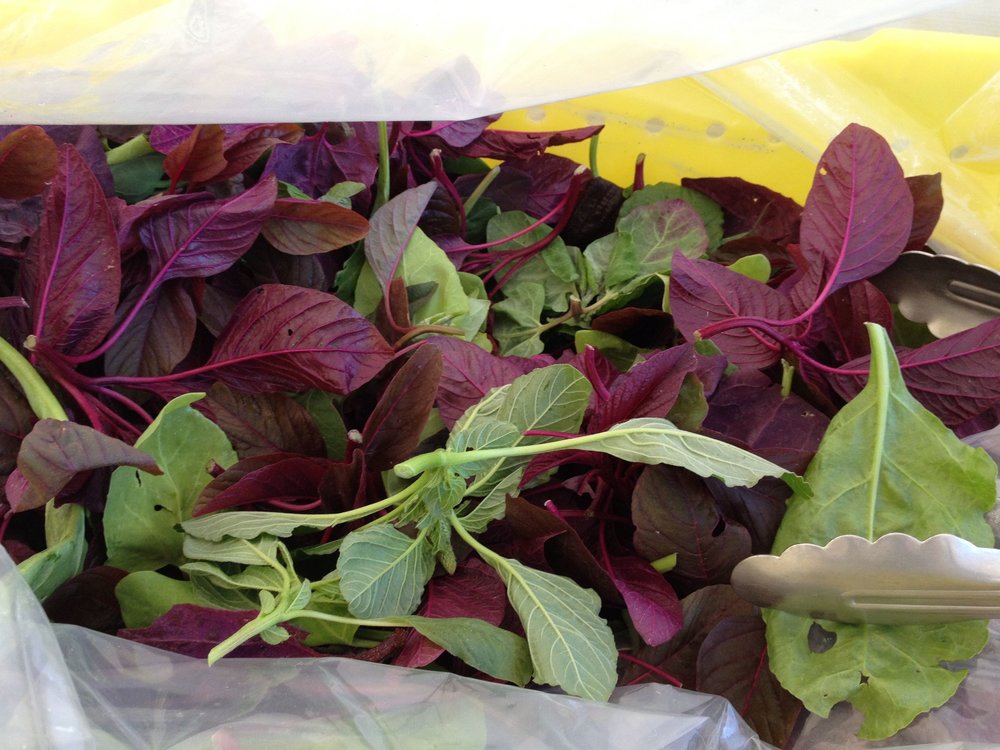 Greens: Purslane, and a mixture of orache and amaranth.
Greens: Purslane, and a mixture of orache and amaranth.
Tart Cherries - Once again, we failed at cherry geography. Apparently cherries are not grown on the Upper Peninsula of Michigan. They are further south in the area around Traverse City, an area we have dubbed "Transpeninsula." They claim the mantle of "Cherry Capitol of the World." Lucky this is the last week for cherries as we have yet to fully explore our ignorance of cherry geography.
We made our deliveries Friday and walked into a restaurant with the wrong invoice. When the staff saw it was for Lovely's 50/50, they regaled us with how delicious Sarah's tart cherry ice cream is and how she uses the cherry pits to flavor it, giving it hint of bitter almond essence. The next stop was at Lovely's and Sarah's mother greeted us with a tub of the ice cream. The ice cream is made from the Balatons. The next batch will use the Montmorency cherries. If you are in Mississippi area, more specifically 4039 N Mississippi Avenue, stop in and try the Balaton cherry ice cream. It is worth a trek across town. Then return to try the Montmorency flavor when that's ready. We have this geography right because we actually travel that area a bit.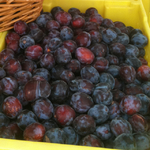 Prunes - The stone fruits have three separate layers surrounding the seed and are what botanists call a drupe. The layers are the skin (exocarp), the pulpy flesh (mesocarp) and the hard layer surrounding the seed (endocarp) that the laity call the stone or pit. These three layers are derived from the mother plant's tissues, whereas the seed inside is the result of the sexual union of the sperm produced by the pollen and the mother plant's egg. The various stone fruit have characteristically shaped endocarps. Cherries have round ones, peaches have a large pitted version, almonds have a softer corky endocarp, and the plums have a very hard asymmetric pit. The seeds have a characteristic bitter almond flavor, and some are toxic when eaten in large quantities. The Boutards have long eaten the seeds of stone fruit without apparent ill effects. In many parts of Europe, it is customary to include some pits to flavor preserves and eau de vies made from stone fruit, just as Sarah does with her ice cream.
Prunes - The stone fruits have three separate layers surrounding the seed and are what botanists call a drupe. The layers are the skin (exocarp), the pulpy flesh (mesocarp) and the hard layer surrounding the seed (endocarp) that the laity call the stone or pit. These three layers are derived from the mother plant's tissues, whereas the seed inside is the result of the sexual union of the sperm produced by the pollen and the mother plant's egg. The various stone fruit have characteristically shaped endocarps. Cherries have round ones, peaches have a large pitted version, almonds have a softer corky endocarp, and the plums have a very hard asymmetric pit. The seeds have a characteristic bitter almond flavor, and some are toxic when eaten in large quantities. The Boutards have long eaten the seeds of stone fruit without apparent ill effects. In many parts of Europe, it is customary to include some pits to flavor preserves and eau de vies made from stone fruit, just as Sarah does with her ice cream.
The plums are the most diverse of the stone fruits in terms of types and flavor. This week, we start with a prune bearing the regal name of Imperial Epineuse. The prunes are a class of related plums with a very high solid content of sugars and fiber, which allows them to dry well. They are prunes no matter whether they are fresh or dried. The commerce in dried prunes originated in Hungary in 16th century and spread westwards into France and Germany. The original seedling of Imperial Epineuse was found in an old monastery near Clairac, France. It was introduced to Oregon in the waning days of the 19th century as a dessert prune under the name of Clairac Mammoth, but never gained a following here. Not sure why, as it is easy to grow and more reliable than any of our other stone fruit. A steady cropper as the Brits would say. The texture is very fine, and pomologists have suggested that it may have a bit of damson in its background. The skin provides a pleasing and contrasting acidic note.
If you have an over-productive prune in your backyard, you can pick the very young fruit in the spring, before the pit has hardened, and cure them just as you would olives. The whole fruit is edible, no need to pit them, and you them in the dishes as you would olives. We crack the fruits with a mallet and put them in a jar with water, changing it daily until they turn olive green. Last year, we cured them in lye. The cured plums look no different than cured olives; the lye cured plums are dark just like lye cured olives. Publication 8267 from UC Davis give good directions (http://anrcatalog.ucdavis.edu/pdf/8267.pdf). We got the idea for curing plums from a visiting Chicago Chef, Paul Kahan, who served up a dish with green peaches cured in the same manner. Greg Higgins and his staff cured gage plums and seasoned them with a Tunisian accent. That is the great part of having visitors to the farm, they always leave a new idea or two as they leave.
We look forward to seeing you all tomorrow.
Anthony & Carol Boutard
Ayers Creek Farm
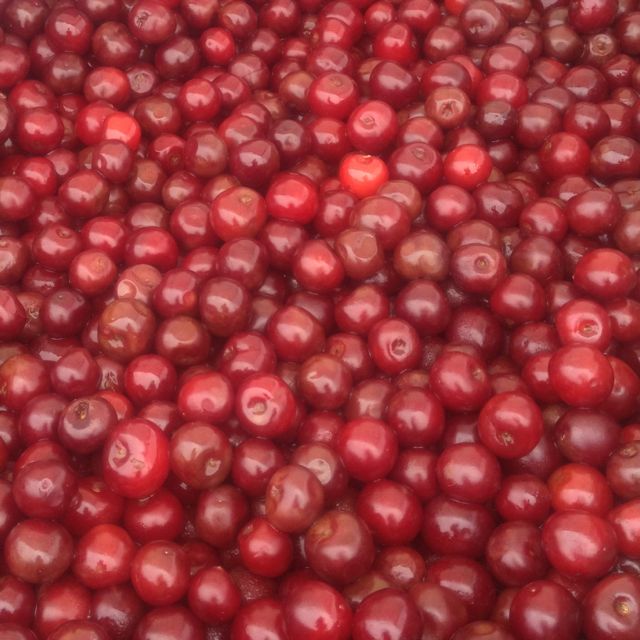
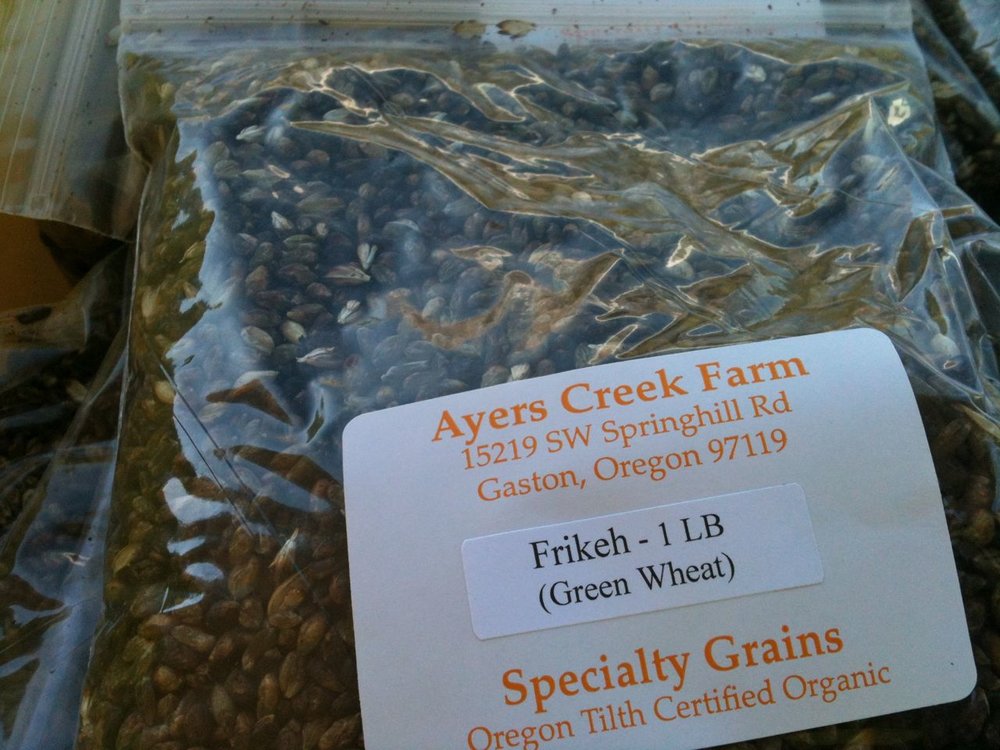
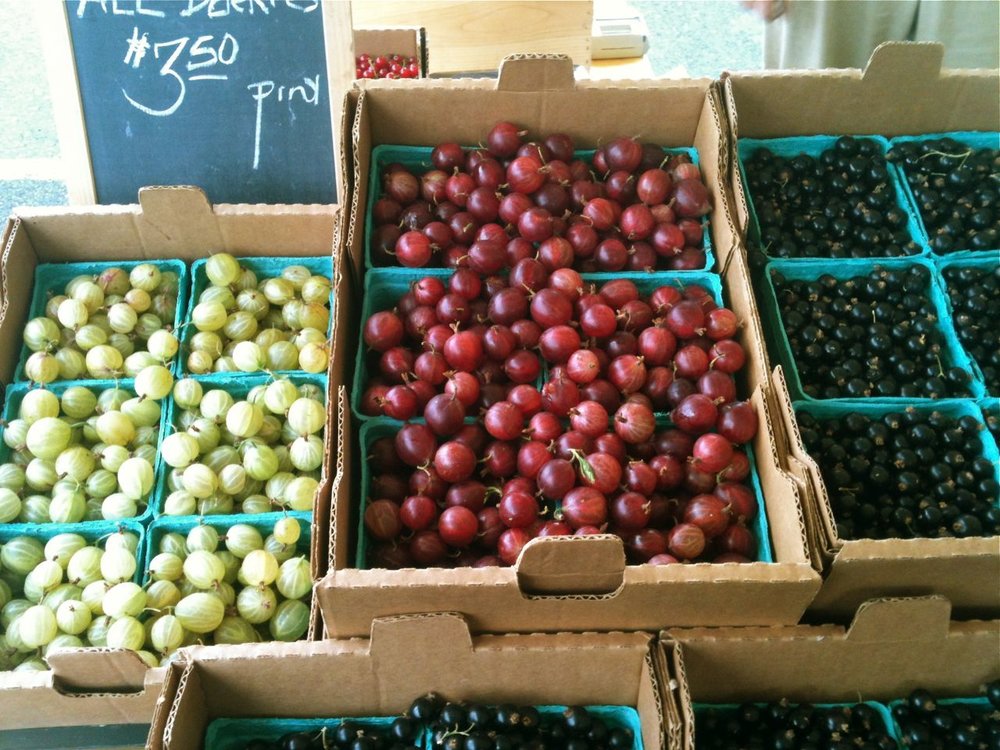

 As true plant collectors, Dave and Annilese have an infectious enthusiasm for the unique and unusual. I found their nursery (like their stall at the market) stocked with a pleasing mix of the familiar and the exotic. Two blooming flats of Sisyrinchium (blue-eyed grass)—one of the top-sellers at the market, according to Annilese—were the anomaly. Most of the plant varieties on display had only a handful of representatives, making for a highly diverse and doted-after assortment.
As true plant collectors, Dave and Annilese have an infectious enthusiasm for the unique and unusual. I found their nursery (like their stall at the market) stocked with a pleasing mix of the familiar and the exotic. Two blooming flats of Sisyrinchium (blue-eyed grass)—one of the top-sellers at the market, according to Annilese—were the anomaly. Most of the plant varieties on display had only a handful of representatives, making for a highly diverse and doted-after assortment. Dave’s work at Terra Nova gives him the opportunity to learn about plants, such as the work of Eugene-based Hellebore breeder Marietta O’Byrne. Her recent series of double-flowered Hellebores add new color and zest to the winter garden, and rank among Dave and Annilese’s personal favorites.
Dave’s work at Terra Nova gives him the opportunity to learn about plants, such as the work of Eugene-based Hellebore breeder Marietta O’Byrne. Her recent series of double-flowered Hellebores add new color and zest to the winter garden, and rank among Dave and Annilese’s personal favorites. Interesting foliage plants permeated the nursery, including Mayapples, Epimediums, a gorgeous black-leaved Bugbane, white-veined niger Hellebores, holly ferns and Hostas, to name a few, all illustrating that a garden without showcase flowers can be as varied and interesting as its blooming counterpart.
Interesting foliage plants permeated the nursery, including Mayapples, Epimediums, a gorgeous black-leaved Bugbane, white-veined niger Hellebores, holly ferns and Hostas, to name a few, all illustrating that a garden without showcase flowers can be as varied and interesting as its blooming counterpart. Just before I left the nursery, Annilese brought out the official mascot, Frondteena, Belgian hare with fine features and coloring as rich as one of the Heucheras on display. It is Frondteena’s profile that they used to create their logo image. Alice followed a white rabbit into Wonderland; Frondteena beckons curious gardeners to Petal Heads’ wonderland of new and unusual plants.
Just before I left the nursery, Annilese brought out the official mascot, Frondteena, Belgian hare with fine features and coloring as rich as one of the Heucheras on display. It is Frondteena’s profile that they used to create their logo image. Alice followed a white rabbit into Wonderland; Frondteena beckons curious gardeners to Petal Heads’ wonderland of new and unusual plants.